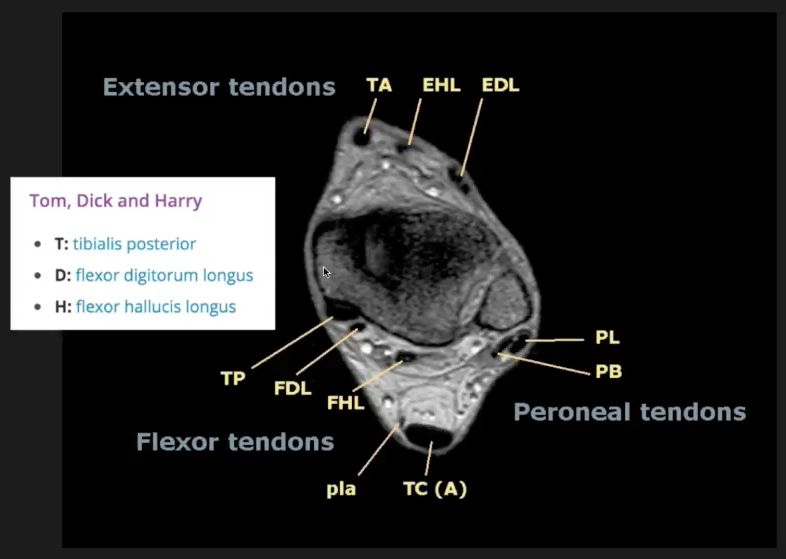Difference between revisions of "DEEP POSTERIOR COMPARTMENT OF LEG-FLEXOR DIGITORUM LONGUS"
From NeuroRehab.wiki
(Imported from text file) |
(Imported from text file) |
||
| Line 7: | Line 7: | ||
<br/><i>[[Image:paste-2615635083823.jpg]]</i> | <br/><i>[[Image:paste-2615635083823.jpg]]</i> | ||
<br/> | <br/> | ||
<br/>Image: | <br/>Image: OpenStax College [[https://creativecommons.org/licenses/by/3.0 CC BY 3.0]], [https://commons.wikimedia.org/wiki/File:1123_Muscles_of_the_Leg_that_Move_the_Foot_and_Toes_c.png via Wikimedia Commons] [Accessed 13 Apr. 2019]. | ||
Latest revision as of 11:29, 1 January 2023
SUMMARY
1. O: medial posterior tibia (below soleal line).
2. I: plantar bases of lateral 4 phalanges of foot.
3. NS: tibial n.
4. A: flexion of lateral 4 toes + plantarflexion of foot.


Image: OpenStax College [CC BY 3.0], via Wikimedia Commons [Accessed 13 Apr. 2019].
Reference(s)
R.M.H McMinn (1998). Last’s anatomy: regional and applied. Edinburgh: Churchill Livingstone.
Gray, H., Carter, H.V. and Davidson, G. (2017). Gray’s anatomy. London: Arcturus.